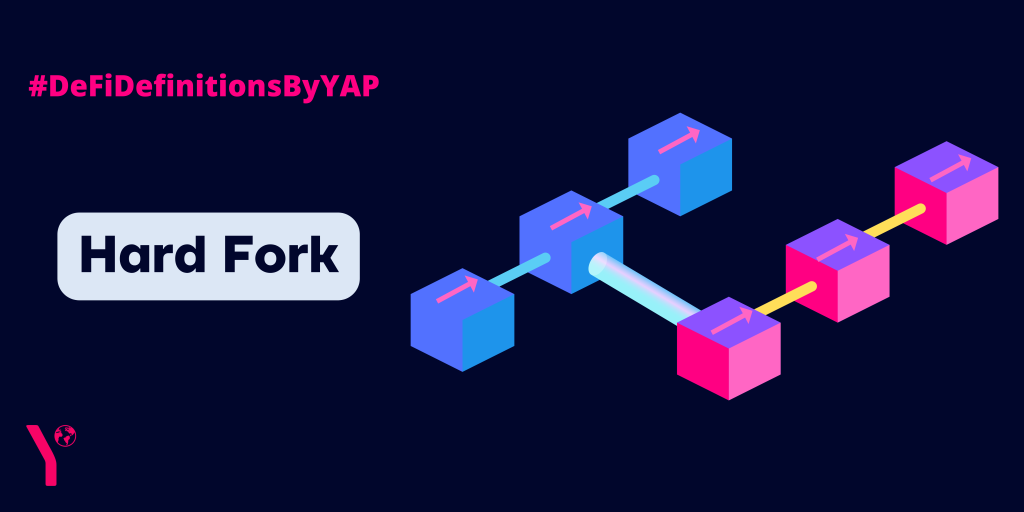A hard fork refers to a network upgrade that significantly diverges from an existing ecosystem. Because blockchain technology is decentralised at its core, there is no central administrator that can “upgrade the system”, so to speak. These changes are decided upon by different subsets (parties) who secure the blockchain. If the majority agrees to a new Ethereum Improvement Proposal, the hard fork is implemented. For example, in a traditional business, a central administrator can propose and enforce changes to the internal system, and employees are forced to accept these changes.
Within the context of Ethereum, for instance, it is not possible to do this as Ethereum clients (transaction validators) must decide to update their code themselves to accept these changes, and then transactions on-chain have to be validated against the new system’s rules. On Ethereum, Ethereum Improvement Proposals (EIPs) have sought to upgrade the Ethereum network successfully to make important changes; most notably, the EIP-3675 (‘The Merge’) update which scrapped Proof-of-Work (PoW) on Ethereum and introduced a Proof-of-Stake (PoS) mechanism. A ‘hard fork’ is essentially the act of an existing network being ‘re-created’ anew.
